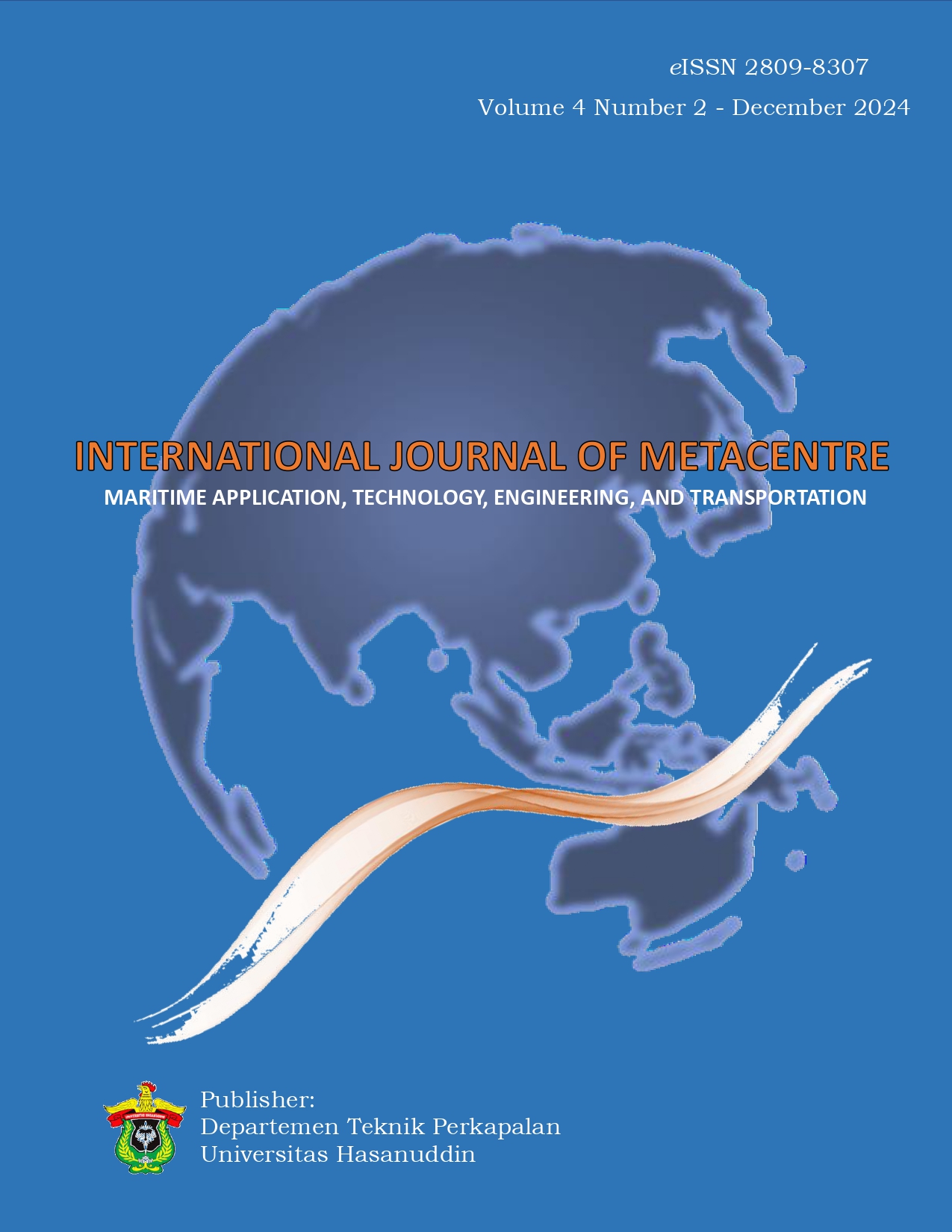Clustering of Ferry Trajectory Distance Based on Port Class and Ship Technical Specification
Keywords:
Clustering, Ferry transportation, Ferry trajectory distanceAbstract
A ferry route connects two ports, between a port and a terminal, and between two terminals at a certain distance. A certain distance is the distance of the ferry trajectory that allows for round-trip ferry services. Ships departing from the port of origin to the port of destination can return to the port of origin on the same day. The trajectory distance (DFT (nautical miles) was once grouped into 8 (eight) distance groups, each connected to the gross tonnage cluster of the ship, namely: the shortest (Group 1): DFT ≤ 1.0 nautical miles; and the farthest (group 8): DFT > 120 nautical miles. The Indonesian Government implemented these distance groups in the period 2003 - 2019. Ferry trajectory distance groups are needed to calculate transportation rates and place ships on a ferry route. This study is intended to evaluate and determine the distance group by the characteristics of ferry transportation services, namely shuttle services. The grouping is based on the class of ferry ports and the technical specifications of ferry ships. The results of this study indicate that one of the eight ferry trajectory distance groups implemented, group 2.4, does not match the characteristics of ferry transportation services (shuttle services). In the distance group, 40.1 ≤ FTD (nautical miles) ≤ 80.0, ferrying or frequency of ship operations is only 1 trip/day. The distance group 2.4 must be changed to 40.9 ≤ DFT (nautical miles) ≤ 70.9 to achieve a ferrying frequency of 2 trips/day. Through this study, eight groups of clustering of ferry trajectory distance are proposed to be implemented by the Indonesian Government. The shortest and longest distance groups, are the first distance group (group of 3.1): DFT (nautical miles) ≤ 2.3; and the eighth distance group (group of 1.2): 101.9 ≤ DFT (nautical miles) ≤ 165.2. Research on passenger perceptions of safety and comfort in relation to the duration of the voyage and the dimensions of the ship needs to be carried out to ensure the grouping of ferry trajectory distances orientation are towards service quality.







